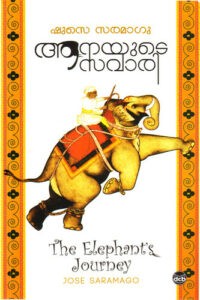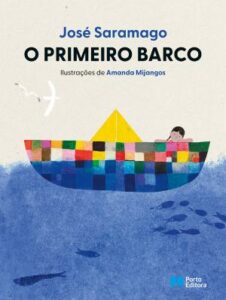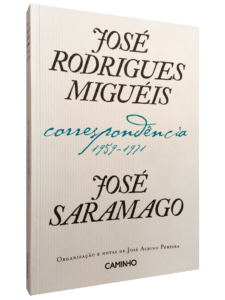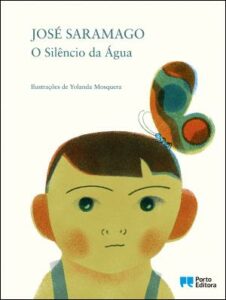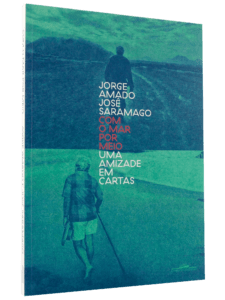The Elephant's Journey

The Elephant's Journey is very close to our own existence and our own identity. The book would not have been written if the end of the elephant's life had not been as it was: their legs were cut off to use as a container for umbrellas and canes. It's a metaphor for human life and life
Foundation
Portugal
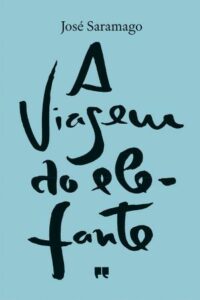
2014
(1st edition at Porto Editora; 8th edition)
Language
Portuguese
The calligraphy on the cover is by the writer Mário de Carvalho
In the middle of the 16th century, King João III offers to his cousin, Archduke Maximilian of Austria, son-in-law of Emperor Charles V, an Indian elephant that has been in Bethlehem for two years, coming from India.
Testimonies do not abound of the historical fact that this offer was made. But there are some. Based on these few elements, and above all with the powerful imagination of a fiction writer who has already given us masterpieces such as Memorial do Convento or The Year of the Death of Ricardo Reis, José Saramago places this exceptional work, A Viagem do Elefante, in the hands of readers. .
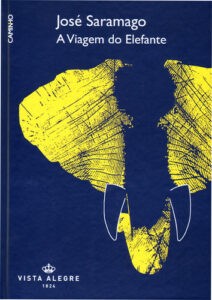
2013
Path – Leya / Vista Alegre
Special edition VISTA ALEGRE for “I + I = I” with cover by David de Almeida, limited to 1000 copies.
Language
Portuguese
In the mid-16th century, King João III offered his cousin, Archduke Maximilian of Austria, an Asian elephant. This novel chronicles the epic journey of this elephant, named Solomon, who had to travel across Europe due to royal whims and absurd strategies. The Elephant's Journey is not a historical book, it is a combination of real and invented facts that make us feel reality and fiction as an indissoluble unit, as something typical of great literature. A reflection on humanity in which humor and humor irony, marks of the author's implacable lucidity, are combined with the compassion with which José Saramago observes human weaknesses.Written ten years after the Nobel Prize was awarded, A Viagem do Elefante (The Elephant's Journey) shows us a Saramago in all his literary splendor.
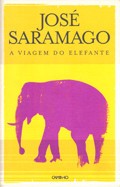
In the middle of the 16th century, King João III offers to his cousin, the Archduke Maximilian of Austria, son-in-law of Emperor Charles V, an Indian elephant that has been in Bethlehem for two years, coming from India. offer do not abound the testimonies. But there are some. Based on these few elements, and above all with the powerful imagination of a fiction writer who has already given us masterpieces such as Memorial do Convento or The Year of the Death of Ricardo Reis, José Saramago now places in the hands of readers this exceptional work, A Viagem do Elephant. In this book, written in very precarious health conditions, we don't know what else to admire – the author's personal style exercised at the level of his best works; a combination of real and invented characters that make us live simultaneously in reality and fiction; a look at humanity in which irony and sarcasm, marks of the author's relentless lucidity, are combined with the compassionate compassion with which the author observes human weaknesses.Written ten years after the Nobel Prize was awarded, The Elephant's Journey shows us a Saramago in all his literary splendor.

2008
Special co-edition José Saramago Foundation-Editorial Caminho
Language
Portuguese
Numbered edition, with illustrations by Pedro Proença.
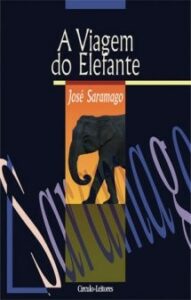
2009
Circle of Readers
Language
Portuguese
Lucid, sarcastic, aware of human weaknesses. In José Saramago's latest novel, we follow the unusual journey of Salomão, the king's elephant. Departing from a historical fact, the offer of our D. João III to the emperor Carlos V, this is an epic that takes us on a troubled journey through the Europe of the century. XVI. Ten years after the Nobel Prize for Literature, and after a prolonged illness, Saramago returns to writing at its best. D. João III, cousin of Emperor Carlos V, decides to present the powerful monarch with an exotic animal. In the midst of a time of discovery, the elephant Salomão would have arrived in Lisbon from Asia. Admired for its magnificence, Salomão will remain for some time in the lands of Portugal, but, such a valuable treasure, he is forced to travel through 18th century Europe. Starting from a historical fact, the offer of the Portuguese king to the emperor, José Saramago builds a whole effable full of humor and intelligence. Under the guise of Solomon's (the elephant) journey, the author draws a lucid (and fierce) portrait of human nature and its weaknesses.
Albania
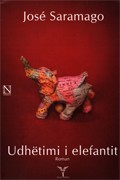
2012 (Trans.: Nasi Lera)
Botimet Dudaj
Language
Albanian
Botimet Dudaj
Germany
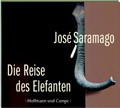
2010 (Audiobook – Voice: Burghart Klaußner) (Trans.: Marianne Gareis )
Language
German
Inspiriert von einer wahren Begebenheit aus dem 16. Jahrhundert, erzählt Saramago meisterhaft von den Abenteuern des Elefanten Salomon und seines gewitzten Mahuts. Meisterhaft und voller Ironie
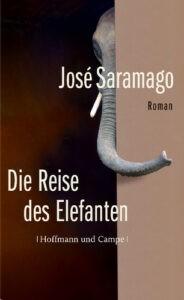
Inspiriert von der wahren Geschichte eines indischen Elefanten, den man im 16. Jahrhundert auf spektakuläre Weise über Land und See von Spanien nach Wien überführte, erzählt Saramago meisterhaft und voller Ironie vonführte den s. Salomon ist als Besitz von Johann III. von Portugal nur noch gelitten. Das exotische Tier aus den fernen Kolonien fristet ein trostloses Dasein, bis die Königin auf die Idee kommt, ihn ihrem Vetter dem Großherzog Maximilian aus Wien zum Geschenk zu machen. Mit einem großen Tross wird Salomon samt seinem Mahut auf eine abenteuerliche Reise geschickt, an deren Ende die eindrucksvolle Überquerung der italienischen Alpen steht. Unterwegs lernt man nicht nur die Eigenheiten und Vorlieben des Elefanten kennen, sondern auch die der Menschen und der Gesellschaft an ihn herum. Dabei ist es der indische Mahut, der, Narr und Weiser zugleich, seine Zeitgenossen häufig demaskiert. Augenzwinkernd verknüpft Saramago in seinem Roman, der einen zuweilen an einen gewissen Ritter aus der Mancha denken lässt, Realität und Fiktion.
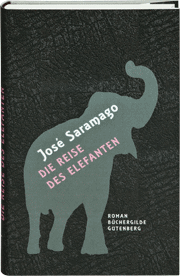
Inspiriert von der wahren Geschichte eines indischen Elefanten, den man im 16. Jahrhundert auf spektakuläre Weise über Land und See von Lissabon nach Wien überführte, erzählt José Saramago meisterhaft und voller Seektakuläre von Lissabon den s. Besitz von König Johann III. von Portugal nur noch gelitten. Das exotische Tier aus den fernen Kolonien fristet ein trostloses Dasein, bis die Königin auf die Idee kommt, Salomon ihrem Verwandten, dem Großherzog Maximilian aus Wien, zum Geschenk zu machen. Mit einem großen Tross wird Salomon samt seinem indischen Mahut auf eine abenteuerliche Reise geschickt, an deren Ende die eindrucksvolle Überquerung der Alpen steht. Unterwegs wird der ungewöhnliche Reisetrupp mit gefährlichen, anrührenden oder auch kuriosen Situationen und Geschichten konfrontiert. Dabei lernt man nicht nur die Eigenheiten und Vorlieben des Elefanten kennen, sondern auch die der Menschen und der Gesellschaft an ihn herum. Und meistens ist es der Mahut, der, Narr und Weiser zugleich, seine Zeitgenossen auf mehr oder weniger charming Weise demaskiert.Sprachgewaltig und stets mit einem schelmischen Augenzwinkern verknüpft Saramago in seinem 19 , entstammt einer Landarbeiterfamilie. Nach einer Reihe verschiedener Tätigkeiten widmete er sich ab 1966 verstärkt der Schriftstellerei. Der Romancier, Erzähler, Lyriker, Dramatiker und Essayist wurde vielfach ausgezeichnet und erhielt 1998 den Nobelpreis für Literatur. Saramago starb in June 2010 in seiner langjährigen Wahlheimat Lanzarote.
“Das Vermächtnis des großen Portugiesen (…) Saramago beschreibt diese skurrile Reise mit viel Ironie, stilistisch brillant und rechnet dabei noch einmal genüsslich mit seinen Lieblingsgegnern ab: Kirche, Adel und Militär. Besser kann man Saramago nicht kennen lernen – und in Erinnerung behalten.”
Brigitte
“José Saramago war ein scharfer Beobachter und flinker Kritiker der Zeitläufte, ob in historisch verkleideten Romanen oder in seinem Blog.”
Neue Zürcher Zeitung
“Leicht und elegant federt Saramago durch die Geschichte, durch die Zeiten.”
Die Welt
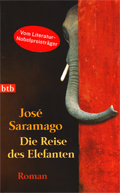
Elefant Salomon ist als Besitz von Johann III. von Portugal nur noch gelitten. Das exotische Tier aus den fernen Kolonien fristet ein trostloses Dasein, bis die Königin auf die Idee kommt, ihn ihrem Vetter, dem Großherzog Maximilian aus Wien, zum Geschenk zu machen. Mit einem großen Tross wird Salomon samt seinem Mahut auf eine abenteuerliche Reise geschickt, an deren Ende die eindrucksvolle Überquerung der italienischen Alpen steht …»Man verehrt Saramago wegen seiner Ruhe und seiner Reflexions. Er philosophiert mit durchdringender Leidenschaft, aber all seine tiefen Überlegungen bleiben immer schön irdisch.«Die Zeit»Die literarische Stimme seines Landes.«
Der Spiegel
Argentina
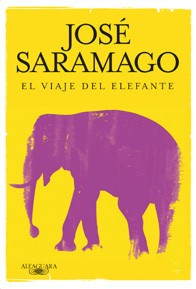
“We always end up where we are waiting for”. LIBRO DE LOS ITINERARIOSA mediated by the 16th siglo and the king Juan III offers to his cousin, the archduke Maximiliano of Austria, an Asian elephant. This novel tells the epic journey of this elephant called Salomón who has to travel across Europe for real whims and absurd strategies. The elephant's journey in a historical book, is a combination of real and invented facts that make us feel the reality and the fiction as an indissoluble unit, as something proper to great literature. A reflection on the humanity in which humor and irony, marks of the implacable lucidity of the author, joins the compassion with which José Saramago observes human weaknesses. del elephant shows us a Saramago in all its literary splendor.
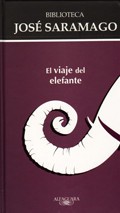
“We always end up where we are waiting for”. LIBRO DE LOS ITINERARIOSA mediated by the 16th siglo and the king Juan III offers to his cousin, the archduke Maximiliano of Austria, an Asian elephant. This novel tells the epic journey of this elephant called Salomón who has to travel across Europe for real whims and absurd strategies. The elephant's journey in a historical book, is a combination of real and invented facts that make us feel the reality and the fiction as an indissoluble unit, as something proper to great literature. A reflection on the humanity in which humor and irony, marks of the implacable lucidity of the author, joins the compassion with which José Saramago observes human weaknesses. del elephant shows us a Saramago in all its literary splendor.
Brazil
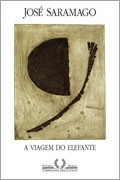
“As incongruous as it may seem…”, so begins the new novel – or short story, as he prefers to call it – by José Saramago, about the unusual journey of an elephant named Salomão, who in the 16th century crossed half of Europe, from Lisbon to Vienna, by the extravagances of a king and an archduke. The episode is true. Dom João III, King of Portugal and Algarves, married to Dona Catarina d'Austria, decided on a beautiful night in 1551 to offer the Austrian Archduke Maximiliano II, son-in-law of Emperor Carlos Quinto, nothing less than an elephant. The animal had come from Goa with its keeper some time before. At first, the exoticism of a pachyderm three meters tall and weighing four tons, drinking two hundred liters of water daily and as many kilograms of fodder daily, had dazzled the Portuguese, but now Salomão was just a smelly and dirty elephant kept in a pen. on the outskirts of Lisbon. Until the outlandish idea of presenting it to the Archduke, then regent of Spain and living in his father-in-law's palace in Valladolid. This historical fact is the starting point for José Saramago to create, with his prodigious imagination, a fiction in which they find themselves. on the paths of Europe royal characters of blue blood, army chiefs who almost come to blows, priests who want to exorcise Solomon or ask him for a miracle. After traveling through Portugal, Spain and Italy, the caravan arrives at the narrow gorges of the Alps, which Salomão faces undaunted. The Elephant's Journey, José Saramago's first book after the autobiographical account Small memoirs (2006), is an idea he elaborated some ago. more than ten years since, on a trip to Salzburg, Austria, he accidentally walked into a restaurant called The Elephant. With his fine irony and a lot of humor, his prose that distills poetry, Saramago reconstructs this epic with a historical background and uses it to make considerations about human nature and, also, elephantine nature. Driven to cross half Europe at the whims of a king and an archduke, Solomon did not disappoint the crowned heads. Proof that, the author concludes, you always get where you have to go.
Bulgaria
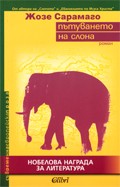
Hummingbird
2011 (Trans.: аргарита Дренска)
Language
Bulgarian
XVI век. Португалският крал Жуау III решава да подари за сватбата на ерцхерцог Максимилиан Австрийски… един слон Слонът Соломон. Така започва легендарното и абсурдно пътуване на дебелокожия бозайник от Лисабон до Виена - пътуване с много перипетии, с много срещи и изпитания и за слона, и за придружаващата го свита. Групата се сблъсква с политически машинации и религиозна алчност, посрещат я с учудване, със страх, с враждебност или с всенародно ликуване, а ситуации гротесковите, в които изпада, са описани с убийствената ирония, присъща на автора. „Пътуването на слона“ and повече приказка, отколкото роман, повече притча, отколкото историческа творба. А правопис особеният, който читателят познава от "Слепота" - без пунктуация, означаваща диалозите, без главни буква на собствените имена - го доближава до устната традиция на миналите времена. В "Пътуването на слона" "шегаджия старият" Сарамаго за пореден път блестящо използва метода на метафоричното писане, за да се посмее над човешките слабости, над онова всичко, което отличава човека от слона.
Korea
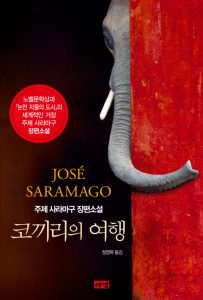
hainaim
2016
Language
Korean
hainaim
Croatia
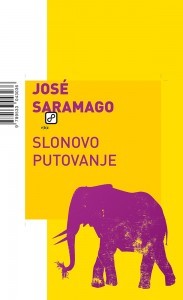
Dok je bio u posjetu austrijskim kolegama piscima, José Saramago zatekao se u Salzburgu, u restoranu “Slon”. Tada je prvi put čuo za priču o indijskom slonu koji je doživio pravu odiseju.
Naime, sredinom 16. stoljeća portugalski kralj Dom João III odlučio je svom rođaku, austrijskom nadvojvodi Maksimilijanu, zetu Karla V, darovati slona kojeg su Portugalci dopremili iz Indije. Uz historijske likove kraljeva, Saramagovi glavni protagonisti su jedan slon i Indijac, njegov čuvar. Duhovito i ironično Saramago rekonstruira taj “epski” svijet s povijesnom pozadinom koristeći ga za prikaz ljudske i životinjske prirode uopće. Utoliko, egg je priča o marginalcima u šesnaestostoljetnoj Europi – slonu i Indijcu, koji se bore s vlastitim potrebama da uspostave ve s Drugim, stvore ve kao pojedinci i kao zajednica, a opet kijit konti .
Cuba
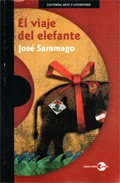
Can you imagine how an elephant would travel, in the 16th century, from one country to another, with seas and wide stretches of land for a while? How do you suppose such a crossing would be for the animal and for all the entourage that accompanies it? By themselves, these questions can be a good incentive for the reading of this ironic, sarcastic, reflective, but above all fascinating novel. Moreover, if this is supposed to come from the pen of one of the most read writers from all over the world and an author who overlaps, once more, reality —the narration arises from true historical data— and fiction in a masterful way, then bienvenido sea El viaje del elephant. Here, Saramago —with his very particular style, captivating characters and a narrator who regales us with knowledge and sympathetic sentences referring to human existence, among other elements—is confirmed as what this will continue to be: a classic of universal letters.José Saramago (1922-2010) was a Portuguese novelist, poet, journalist and playwright, who received the Nobel Prize in Literature in 1998. Without embargo, before becoming one of the greatest writers in the world, he moved through several trades: from locksmith to mechanic, to editor. His first novel, Tierra de Sin, was published in 1947 but in the success story. Luego spent twenty years without publishing because, as he said then, “there was probably nothing to decide”. His first works in prose, Manual of painting and calligraphy (1977) and Alzado del suelo (1980), and his belief as an author of high value for, as critics have pointed out, his controversial view of history and culture. Recognition at the international level takes place in 1982 with the publication of Memorial del Convento, the one that followed El Año de la Muerte by Ricardo Reis. Many of his texts have been published by our Editorial, such as Ensayo sobre la ceguera, Historia del cerco de Lisboa, Las intermitencias de la muerte, among others.
Denmark
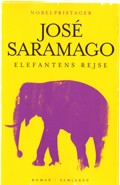
1551. Den portugisiske konge og hans dronning synes ikke, de har givet fætter Maximilian, ærkehertug og vicekonge af Spanien, en passende bryllupsgave. Dronningen foreslår, at de kan give ham Salomon, en indisk elefant, de tidligere har fået som gave. Det vil ikke være uoverkommeligt at sende elefanten til Valladolid, hvor Maximilian residerer kort tid endnu, inden han skal tilbage til Wien.En karavane af portugisisk rytteri, elefanten og elefantpasseren Subhro drager af sted til den spanske middelhavskyst, med skib til Genova, tværs over det nordlige Italien, gennem is og sne over alperne og videre til den endelige destination. Det bliver en dramatisk færd med diplomatiske spændinger mellem portugisisk og østrigsk kavaleri, plattenslageri, utrolige historier og religiøse mirakler. Saramagos fortælling er baseret på en historisk begivenhed og er fortalt med en intens følsomhed over for det menneskelige og med en underfundig og indsigtsfuld satire rettet mod de magtforhold, der kan komme på tværs af den sunde fornuft. Pressen skriver:»Den portugisiske nobelprismodtager José Saramagos næstsidste bog hører til det bedste, han har skrevet.«**** – Politiken
»tilen er Saramagos helt eget rytmiske hjerteslag, denne slentrende gangart af ord, der skaber en dyb indsigt i menneskelig adfærd, med de mange underfundige indskud, hans pludselige snert af bidsk satire og ikke mindst den patina af visdom, der forlener hans bøger med en duft af eventyr.«
****** – Jyllands-Posten
»af en mesters hånd.«
**** – MetroXpress
Slovakia
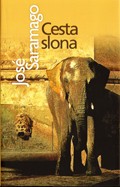
Najnovšia kniha Josého Saramaga sa zakladá na historickej udalosti a rozpráva o ceste jedného slona z Lisabonu do Viedne, kam ho portugalský panovník poslal ako dar svojmu bratrancovi Maximiliánovi, rakúskemu veľkovojvodovi. O tejto ceste sa veľa nevie, kniha je teda predovšetkým fikcia, v ktorej sa stretávajú historické postavy s vymyslenými. Saramago ju však nenazýva románom, ale poviedkou. Chýba jej totiž podľa neho základný prvok románu – príbeh o láske.
Spain
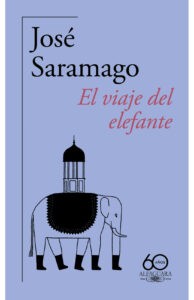
Pertenece a la serie «60.º aniversario de Alfaguara»
«Siempre acabamos llegando a donde nos esperan».
Libro de los Itinerarios
A mediados del siglo XVI el rey Juan III ofrece a su primo, el archiduque Maximiliano de Austria, un elefante asiático. Esta novela cuenta el viaje épico de ese elefante llamado Salomón que tuvo que recorrer Europa por caprichos reales y absurdas estrategias.
El viaje del elefante no es un libro histórico, es una combinación de hechos reales e inventados que nos hace sentir la realidad y la ficción como una unidad indisoluble, como algo propio de la gran literatura. Una reflexión sobre el sentido de la vida humana, con sus afanes, desvelos y ambiciones, con su irremisible final, en la que el humor y la ironía, marcas de la implacable lucidez del autor, se unen a la compasión con la que José Saramago observa las flaquezas humanas.
The critic said:
«Una deslumbrante comedia humana, llena de risas, emoción y sabiduría».
Le Monde des Livres
«Una obra maestra de la ironía y la empatía entre seres humanos».
Los Angeles Times
«Saramago vuelvecomprensible una realidad huidiza, con parábolas sostenidas por la imaginación, la compasión y la ironía».
Nobel Committee
«A man with a sensitivity and a capacity to see and understand that is very much above what we generally see and understand in mortal communities».
Hector Abad Faciolince
«Saramago is an example, a dignified style of life and literature, which demonstrates the possibility of sailing against the current […]. Your word has the value of an antifreeze, of a personal remedy against the gales of cynicism that envelop us».
Luis Garcia Montero
«I don't know, I don't want to know, from where Saramago got that diabolical narrative tone, hard and funny at a time, [...] that allows him to tell so much about the heart and sometimes about the story».
Luis Landero
«Saramago writes novels about myths to demystify them, [...] always to address the reality that surrounds him, to deal with current problems that affect everyone, and so that everything is clear from the beginning».
Rafael Conte, Babelia
«Like Günter Grass or Cees Nooteboom, Saramago aspires to engage with an audience that goes beyond national limits».
The Country

2008, 2009; 2011 (Colecção Biblioteca Saramago; Colecção Big Books – Punto de Lectura); 2015 (DeBols!llo Contemporánea); 2018 (edição especial da Alfaguara por ocasião dos 20 anos do Nobel de Literatura a José Saramago) (Trad.: Pilar del Río)
Language
Spanish
«Siempre acabamos llegando a donde nos esperan».
Libro de los itinerarios
A mediados del siglo XVI el rey Juan III ofrece a su primo, el archiduque Maximiliano de Austria, un elefante asiático. Esta novela cuenta el viaje épico de ese elefante llamado Salomón que tuvo que recorrer Europa por caprichos reales y absurdas estrategias.El viaje del elefante no es un libro histórico, es una combinación de hechos reales e inventados que nos hace sentir la realidad y la ficción como una unidad indisoluble, como algo propio de la gran literatura. Una reflexión sobre la humanidad en la que el humor y la ironía, marcas de la implacable lucidez del autor, se unen a la compasión con la que José Saramago observa las flaquezas humanas.
Escrita diez años después de la concesión del Premio Nobel, El viaje del elefante nos muestra a un Saramago en todo su esplendor literario.
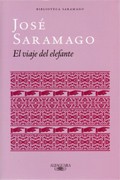
2008, 2009; 2011 (Colecção Biblioteca Saramago; Colecção Big Books – Punto de Lectura); 2015 (DeBols!llo Contemporánea); 2018 (edição especial da Alfaguara por ocasião dos 20 anos do Nobel de Literatura a José Saramago) (Trad.: Pilar del Río)
Language
Spanish
«Siempre acabamos llegando a donde nos esperan».
Libro de los itinerarios
A mediados del siglo XVI el rey Juan III ofrece a su primo, el archiduque Maximiliano de Austria, un elefante asiático. Esta novela cuenta el viaje épico de ese elefante llamado Salomón que tuvo que recorrer Europa por caprichos reales y absurdas estrategias.El viaje del elefante no es un libro histórico, es una combinación de hechos reales e inventados que nos hace sentir la realidad y la ficción como una unidad indisoluble, como algo propio de la gran literatura. Una reflexión sobre la humanidad en la que el humor y la ironía, marcas de la implacable lucidez del autor, se unen a la compasión con la que José Saramago observa las flaquezas humanas.
Escrita diez años después de la concesión del Premio Nobel, El viaje del elefante nos muestra a un Saramago en todo su esplendor literario.
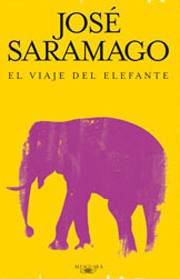
2008, 2009; 2011 (Colecção Biblioteca Saramago; Colecção Big Books – Punto de Lectura); 2015 (DeBols!llo Contemporánea); 2018 (edição especial da Alfaguara por ocasião dos 20 anos do Nobel de Literatura a José Saramago) (Trad.: Pilar del Río)
Language
Spanish
«Siempre acabamos llegando a donde nos esperan».
Libro de los itinerarios
A mediados del siglo XVI el rey Juan III ofrece a su primo, el archiduque Maximiliano de Austria, un elefante asiático. Esta novela cuenta el viaje épico de ese elefante llamado Salomón que tuvo que recorrer Europa por caprichos reales y absurdas estrategias.El viaje del elefante no es un libro histórico, es una combinación de hechos reales e inventados que nos hace sentir la realidad y la ficción como una unidad indisoluble, como algo propio de la gran literatura. Una reflexión sobre la humanidad en la que el humor y la ironía, marcas de la implacable lucidez del autor, se unen a la compasión con la que José Saramago observa las flaquezas humanas.
Escrita diez años después de la concesión del Premio Nobel, El viaje del elefante nos muestra a un Saramago en todo su esplendor literario.

Santillana
2010 (Trad.: Pilar del Río)
Language
Spanish
Edição ilustrada por Manuel Estrada, por ocasião dos 50 anos da editora Santillana
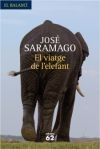
2009; 2010 (catalão) (Labutxaca – edição de bolso) (Trad.: Núria Prats)
Language
Catalan
La nova novel·la del Premi Nobel portuguès: un viatge èpic i jovial d’un elefant asiàtic des de Lisboa fins a Viena en ple segle XVI.Text de contraportada“Se’m va dir que es tractava del viatge d’un elefant que, al segle XVI, sota el regnat del rei Joan III, va ser portat de Lisboa a Viena. Vaig pressentir que allà hi havia una història…”. Basant-se en aquest fet real, que forma part de la petita història, més que no pas de la Història, José Saramago recrea el viatge èpic, prosaic i jovial d’un elefant asiàtic i de la seva luxosa i sorprenent comitiva.Ja fa dies que el rei Joan III de Portugal té al cap oferir un bon regal de casament a l’arxiduc Maximilià d’Àustria que, com a regent d’Espanya, s’ha instal·lat un temps a Valladolid abans de tornar a Viena. “Què millor que l’elefant Salomó?”, se li acut a la reina. La missiva oferint el regal rep la immediata aprovació i comencen els preparatius. En ple agost, l’exòtica caravana emprèn el camí, enmig de la por i l’admiració dels habitants dels pobles. De Lisboa a Valladolid i després fins a Roses per embarcar cap a Gènova, des d’on iniciaran la dura ruta cap al nord, travessant els temibles Alps.
Una novel·la coral plena de tendresa, compassió, sarcasme i humor, molt d’humor, un humor que José Saramago aprofita per mostrar-nos un laberint d’humanitats en conflicte, de personatges que entren i surten i comparteixen esforços, perplexitats i grans alegries.
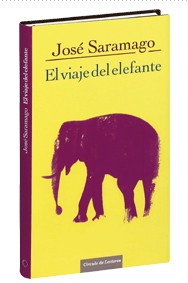
La vida puede ser un viaje absurdo. Pero, como le ocurre al elefante que protagoniza esta novela, «siempre acabamos llegando a donde nos esperan». Once años después de recibir el premio Nobel de Literatura, José Saramago nos ilumina con una fábula sobre la condición humana. Una obra imaginativa, dotada de un humor implacable y que ofrece múltiples lecturas.

Pertenece a la serie «60.º aniversario de Alfaguara»
«Siempre acabamos llegando a donde nos esperan».
Libro de los Itinerarios
A mediados del siglo XVI el rey Juan III ofrece a su primo, el archiduque Maximiliano de Austria, un elefante asiático. Esta novela cuenta el viaje épico de ese elefante llamado Salomón que tuvo que recorrer Europa por caprichos reales y absurdas estrategias.
El viaje del elefante no es un libro histórico, es una combinación de hechos reales e inventados que nos hace sentir la realidad y la ficción como una unidad indisoluble, como algo propio de la gran literatura. Una reflexión sobre el sentido de la vida humana, con sus afanes, desvelos y ambiciones, con su irremisible final, en la que el humor y la ironía, marcas de la implacable lucidez del autor, se unen a la compasión con la que José Saramago observa las flaquezas humanas.
The critic said:
«Una deslumbrante comedia humana, llena de risas, emoción y sabiduría».
Le Monde des Livres
«Una obra maestra de la ironía y la empatía entre seres humanos».
Los Angeles Times
«Saramago vuelvecomprensible una realidad huidiza, con parábolas sostenidas por la imaginación, la compasión y la ironía».
Nobel Committee
«A man with a sensitivity and a capacity to see and understand that is very much above what we generally see and understand in mortal communities».
Hector Abad Faciolince
«Saramago is an example, a dignified style of life and literature, which demonstrates the possibility of sailing against the current […]. Your word has the value of an antifreeze, of a personal remedy against the gales of cynicism that envelop us».
Luis Garcia Montero
«I don't know, I don't want to know, from where Saramago got that diabolical narrative tone, hard and funny at a time, [...] that allows him to tell so much about the heart and sometimes about the story».
Luis Landero
«Saramago writes novels about myths to demystify them, [...] always to address the reality that surrounds him, to deal with current problems that affect everyone, and so that everything is clear from the beginning».
Rafael Conte, Babelia
«Like Günter Grass or Cees Nooteboom, Saramago aspires to engage with an audience that goes beyond national limits».
The Country
USA
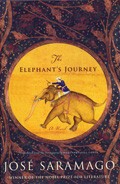
In 1551, King João III of Portugal gave Archduke Maximilian an unusual wedding present: an elephant named Solomon. The elephant’s journey from Lisbon to Vienna was witnessed and remarked upon by scholars, historians, and ordinary people. Out of this material, José Saramago has spun a novel already heralded as “a triumph of language, imagination, and humor” (El País).Solomon and his keeper, Subhro, begin in dismal conditions, forgotten in a corner of the palace grounds. When it occurs to the king and queen that an elephant would be an appropriate wedding gift, everyone rushes to get them ready: Subhro is given two new suits of clothes and Solomon a long overdue scrub.Accompanied by the Archduke, his new wife, and the royal guard, our unlikely heroes traverse a continent riven by the Reformation and civil wars. They make their way through the storied cities of northern Italy: Genoa, Piacenza, Mantua, Verona, Venice, and Trento, where the Council of Trent is in session. They brave the Alps and the terrifying Isarco and Brenner Passes; they sail across the Mediterranean Sea and up the Inn River (elephants, it turns out, are natural sailors). At last they make their grand entry into the imperial city. The Elephant’s Journey is a delightful, witty tale of friendship and adventure.
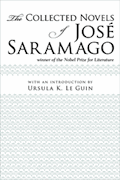
This collection, available exclusively in e-book form, brings together the twelve novels (and one novella) of the great Portuguese writer José Saramago, with an introductory essay by Ursula Le Guin. From Saramago’s early work, like the enchanting Baltasar & Blimunda and the controversial Gospel According to Jesus Christ, through his masterpiece Blindness and its sequel Seeing, to his later fables of politics, chance, history, and love, like All the Names and Death with Interruptions, this volume showcases the range and depth of Saramago’s career, his inimitable narrative voice, and his vast reserves of invention, humor, and understanding.
Finland
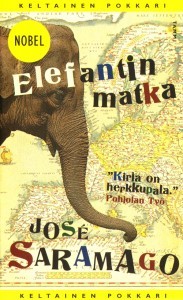
Elefantin matka on tosipohjainen ja samalla sadunomainen kertomus Salomo-elefantin ja sen hoitajan Subhron matkasta Lissabonista Wieniin. Portugalin, silloisen mahtavan siirtomaavallan kuningas Juhana III oli 1500-luvun puolivälissä tuottanut Intiasta elefantin Lissaboniin. Vuonna 1551 hän keksii antaa sen kihlajaislahjaksi vaimonsa serkulle, Itävallan arkkiherttua Maksimilianille. Ja siitä alkaa Salomon ja Subhron vaellus halki Portugalin ja Espanjan, yli Ligurianmeren, poikki Lombardian, yli lumisten Alppien ja pitkin Inniä ja Tonavaa.Kuninkaallista lahjaa on saatettava asiaankuuluvan juhlallisesti: alkutaipaleella mukana on portugalilainen ratsuväenosasto, loppumatkasta itävaltalaiset kyrassieerit välkkyvine rintapanssareineen. Ja elefantti saa tietenkin osakseen huomiota kaikkialla missä se kulkee, enimmäkseen ihmetystä, ihastusta ja auttamisen halua, mutta joskus myös taikauskoista pelkoa.Tarinan keskushahmo on elefantin hoitaja Subhro. Hän on kuin prisma, jonka läpi kaikki näkyy: toisaalta elefantin tuntemukset ja kokemukset, toisaalta tämä mukamas sivistynyt Eurooppa jonka omituisuudet hän ulkopuolisena näkee muita selvemmin. Subhron kautta Saramago saa tilaisuuden tehdä herkullista pilaa katolisesta kirkosta, kuninkaallisten oikuista ja politiikan kiemuroista.”Saramagon elämänmyönteisin, leikkimielisin, humoristisin ja taianomaisin kirja.”
– Los Angeles Times
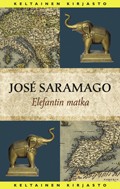
Elefantin matka on tosipohjainen ja samalla sadunomainen kertomus Salomo-elefantin ja sen hoitajan Subhron matkasta Lissabonista Wieniin. Portugalin, silloisen mahtavan siirtomaavallan kuningas Juhana III oli 1500-luvun puolivälissä tuottanut Intiasta elefantin Lissaboniin. Vuonna 1551 hän keksii antaa sen kihlajaislahjaksi vaimonsa serkulle, Itävallan arkkiherttua Maksimilianille. Ja siitä alkaa Salomon ja Subhron vaellus halki Portugalin ja Espanjan, yli Ligurianmeren, poikki Lombardian, yli lumisten Alppien ja pitkin Inniä ja Tonavaa.Kuninkaallista lahjaa on saatettava asiaankuuluvan juhlallisesti: alkutaipaleella mukana on portugalilainen ratsuväenosasto, loppumatkasta itävaltalaiset kyrassieerit välkkyvine rintapanssareineen. Ja elefantti saa tietenkin osakseen huomiota kaikkialla missä se kulkee, enimmäkseen ihmetystä, ihastusta ja auttamisen halua, mutta joskus myös taikauskoista pelkoa.Tarinan keskushahmo on elefantin hoitaja Subhro. Hän on kuin prisma, jonka läpi kaikki näkyy: toisaalta elefantin tuntemukset ja kokemukset, toisaalta tämä mukamas sivistynyt Eurooppa jonka omituisuudet hän ulkopuolisena näkee muita selvemmin. Subhron kautta Saramago saa tilaisuuden tehdä herkullista pilaa katolisesta kirkosta, kuninkaallisten oikuista ja politiikan kiemuroista.”Saramagon elämänmyönteisin, leikkimielisin, humoristisin ja taianomaisin kirja.”
– Los Angeles Times
France
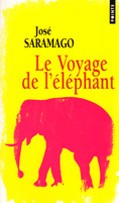
En 1551, le roi du Portugal Jean III offre à l’archiduc Maximilien d’Autriche, neveu de Charles Quint, un éléphant d’Asie, Salomon, qui vit depuis deux ans à Belém avec son cornac Subhro. De Lisbonne à la capitale autrichienne, en passant par les plateaux de la Castille, la Méditerranée, Gênes et la route des Alpes, Salomon, objet d’absurdes stratégies, traverse l’Europe au gré des caprices royaux, des querelles militaires et des intérêts ecclésiastiques, soulevant sur son passage l’enthousiasme de villageois émerveillés.Entrelacs de faits réels et inventés, Le Voyage de l’éléphant est un délicieux roman choral, une réflexion sur la vie et la condition humaine, où l’humour et l’ironie, armes de l’implacable lucidité de l’auteur, s’unissent à la compassion avec laquelle José Saramago observe les faiblesses des hommes.«Une comédie humaine éblouissante, pleine de rires, d’émotions et de sagesse.» Le Monde des livres
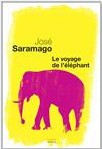
En 1551, le roi du Portugal Jean III offre à l’archiduc Maximilien d’Autriche, neveu de Charles Quint, un éléphant d’Asie, Salomon, qui vit depuis deux ans à Belém avec son cornac Subhro. De Lisbonne à la capitale autrichienne, en passant par les plateaux de la Castille, la Méditerranée, Gênes et la route des Alpes, Salomon, objet d’absurdes stratégies, traverse l’Europe au gré des caprices royaux, des querelles militaires et des intérêts ecclésiastiques, soulevant sur son passage l’enthousiasme de villageois émerveillés.Entrelacs de faits réels et inventés, Le Voyage de l’éléphant est un délicieux roman choral, une réflexion sur la vie et la condition humaine, où l’humour et l’ironie, armes de l’implacable lucidité de l’auteur, s’unissent à la compassion avec laquelle José Saramago observe les faiblesses des hommes.«Une comédie humaine éblouissante, pleine de rires, d’émotions et de sagesse.» Le Monde des livres
Georgia
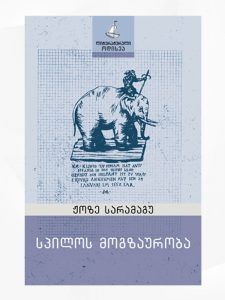
სარამაგუს ერთ-ერთი ბოლო რომანი, „სპილოს მოგზაურობა“ ისტორიულ ამბავს ეფუძნება და მოგვითხრობს გოადან პორტუგალიაში საჩუქრად გაგზავნილი სპილო სოლომონის მოგზაურობას ხელახლა გაჩუქების შემდეგ – პორტუგალიიდან ავსტრიამდე. სოლომონი, იგივე სულეიმანი, რომელიც პორტუგალიის მეფე ჟუან მესამემ ავსტრიის ერცჰერცოგ მაქსიმილიანს საქორწინო საჩუქრად მიართვა, თავის მომვლელ სუბჰროსთან ერთად რთულსა და გრძელ, ცნობისმოყვარე გამცილებლებით დატვირთულ გზას გადის ლისაბონიდან ვენამდე და მგზავრობისას ათას ხიფათსა და არაერთ უცნაურ ადამიანს გადაეყრება. მანამდე თვალით უნახავი სპილოს გამოჩენა ისე აღაფრთოვანებს და გააოცებს ლამის მთელ ევროპას, რომ მის ამბავს ისტორიული წყაროები დღემდე ინახავენ, სარამაგუ კი თხრობის ჩვეული სტილით, მსუბუქი იუმორითა და ირონიით გვიყვება ამ ერთი შეხედვით ბანალური, მაგრამ ძალიან საინტერესო მოგზაურობის ისტორიას.
Greece
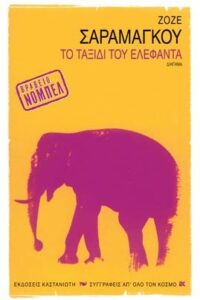
Στα μέσα του 10ου αιώνα ο βασιλιάς Ιωάννης Γ’ της Πορτογαλίας δώρισε στον εξάδελφό του, τον αρχιδούκα Μαξιμιλιανό της Αυστρίας, γαμπρό του αυτοκράτορα Καρόλου Ε’, έναν ελέφαντα που επί δύο χρόνια βρισκόταν στη Λισαβόνα, προερχόμενος από την Ινδία. Με βάση τα ελάχιστα στοιχεία που βρέθηκαν, αλλά κυρίως με την πανίσχυρη φαντασία του που μας έδωσε τόσα και τόσα αριστουργήματα, ο Ζοζέ Σαραμάγκου φτιάχνει μια ιστορία όπου η πραγματικότητα μπλέκεται με τη μυθοπλασία, η ειρωνική ματιά με το χιούμορ, η κριτική διάθεση με τη συμπάθεια για το ανθρώπινο γένος. Το ταξίδι του ελέφαντα συμπίπτει με την επέτειο των δέκα χρόνων μετά την απονομή του Νόμπελ λογοτεχνίας στο συγγραφέα.
Netherlands
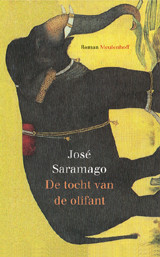
In 1551 stuurt koning Dom João III van Portugal (dan nog een wereldrijk) een Indiase olifant als huwelijksgeschenk naar zijn neef, aartshertog Maximiliaan van Oostenrijk, schoonzoon van Karel V. José Saramago volgt in dit zowel humoristische als ironische verhaal die olifant, Salomon, op zijn vaak barre tocht van Lissabon naar Wenen. Onderweg deelt hij op de van hem bekende wijze menige sneer uit naar de willekeur en megalomanie van machthebbers.De tocht van de olifant werd onder bijzonder moeilijke omstandigheden geschreven: Saramago zweefde door een mysterieuze ziekte maandenlang op de rand van de dood. Als door een wonder herstelde hij en slaagde erin dit boek, zijn zesde sinds hij in 1998 de Nobelprijs kreeg, te voltooien.‘Saramago is een van de meest oorspronkelijke en opmerkelijke schrijvers van Europa. Zijn oeuvre kenmerkt zich door een komisch onderzoekende stijl en een mijmerend pessimistische toon en maakt het onbestemde onvergetelijk.’ Los Angeles Times
‘Saramago lezen betekent zinnen lezen, eerst en vooral, en die zinnen behoren tot de gewaagdste en meest weergaloze die er tegenwoordig geschreven worden.’ Vrij Nederland
Hungary
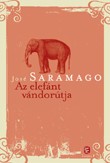
A XVI. század derekán III. János portugál király azzal lepte meg házasulandó unokaöccsét, az osztrák Miksa főherceget, hogy a nászajándékhoz ráadásként küldött neki egy indiai elefántot. Az ajándékozási ceremóniáról igen keveset tudunk, csak néhány forrás emlékezik meg róla. Ezekből a szűkszavú beszámolókból kiindulva az áradó írói fantáziával megáldott José Saramago egykori nagy regényeihez mérhető művet alkotott, lenyűgöző történetbe foglalta az elefánt hosszúra nyúló vándorútját Belémből, a portugál királyi udvarból fél Európán, az Alpok hágóin át az osztrák fővárosba.Nem tudjuk, hogy a könyv olvasása közben mit csodáljunk jobban: elbeszélői stílusát-e, amely írói munkásságának legmaradandóbb pillanatait idézi, a valóságos és kitalált személyek egymás mellett szerepeltetését-e, amelynek révén a valóság és a képzelet oly mértékben egybeolvad, ahogyan csak a legnagyobb művészi alkotásokban szokott, vagy figurateremtő erejét és azt az elnéző derűt, amellyel az iróniára és gunyorosságra hajlamos José Saramago az emberi gyöngeségeket megmutatja.A Nobel-díj odaítélése után tíz évvel megírt Az elefánt vándorútjá-ban Saramago teljes irodalmi fegyverzetében lép újra elénk.
India
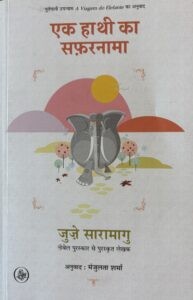
दो साल से लिस्बन में रह रहे हाथी सोलोमन को अब एक लम्बे सफ़र पर जाना है। राजा डोम जुआँऊ तृतीय वियना के हैप्सबर्ग के एक आर्चदुक को उसे शादी के तोहफ़े के रूप में भेंट करना चाहता है। अपने नए ठिकाने तक पहुँचने के लिए हाथी को पैदल ही पहुँचना है। इस तरह शुरू होता है वह दिलचस्प सफ़र जो इस बहादुर हाथी को कास्टील के धूल-भरे मैदानों से होते हुए समुद्र पार जेनोआ और उत्तरी इटली तक ले जाएगा। वहाँ उसे बर्फीले आल्प्स को पार करना होगा जैसे सदियों पहले हानिबल के योद्धा हाथियों ने किया था।
यह उपन्यास एक सच्ची घटना पर आधारित है जिसमें लेखक ने तथ्यों, किंवदन्तियों और कल्पना का अद्भुत मिश्रण किया है।
Israel
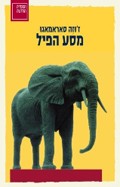
מרים טבעון)]שהתעוור פתאום: הוא רואה הכל לבן, כאילו נפל לתוך ים של חלב. מישהו מתנדב להסיעו הביתה וכששבה ב-2007, כשהחל סאראמאגו, אז ב 85, לכתוב את ‘מסע הפיל’, כבר קיננה בו מחלה שאובחנה רק כעבור חודשִׁים; וכשאושפז לבסוף בבית-חולים היה חשש רציני לחייו, ואף הוא-עצמו החל להטיל ספק בכך שיסיים את הספר. אבל כעבור שבעה חודשים, אחרי שהחלים לחלוטין, הוא שב במרץ מחודש אל כתיבת הספר המחזיר-לחיים הזה, אשר מוקדש לאשתו פִּילאר דֶל רִיוֹ “שלא נתנה לי למות” – סיפור מסעו המשעשע והמרגש של פיל הודי, שבגחמתם האבסורדית של מלך ושל ארכידוכס צועד במאה השש-עשרה על-פני מחצית אירופה, מליסבון לווינה. מסעו של הפיל הוא עובדה היסטורית. דוֹן זוּאַוּ השלישי, מלך פורטוגל, ואשתו האוסטרית דונה קתרינה, העניקו פיל כמתנת נישואין לבן-הדוד הארכידוכס (הקיסר בעתיד) מקסימיליאן, אחרי שהחיה הענקית הנדירה, שאיש לא ראה כמותה באירופה באותה עת, כבר נמאסה עליהם. אלא שיש מי שחולף על-פני ההיסטוריה כבכביש מהיר, ויש מי שכמו סאראמאגו עובר בסבלנות מאבן לאבן, ומרים כל אחת, כי הוא מוכרח לדעת מה נמצא מתחתיה, והנה הוא מוצא פיל ועכשיו עליו למלא פערים בין תחנות מסלולו, להמציא את אחורי הקלעים האנושיים של היסטוריה. אין אסונות ומיתות, ואין קרבות ומצוקות ברומאן הזה. אפילו במעברים המסוכנים באַלְפִּים לא מתרחשת שום מפולת. למעשה, סאראמאגו כמו מעדיף לעצור כאן רגע לפני דרמות גדולות מסוג אלה שאיכלסו את כתיבתו ברומאנים קודמים. אבל ב’מסע הפיל’ מתחולל שינוי ברגש ובמבט, ולא משום שהעולם האירופי (כפי שניתן לצפות מסאראמאגו) נראה בו מפרספקטיבה חדשה של פיל אסייתי שיש לו תהייה גדולה. הפיל נשאר לא-מובן, והספר לא מזכה אותו במונולוגים פנימיים. אבל מלוויו, בניסיונותיהם לדמיין אותו ולהבינו, נאלצים לא פעם לקנח את הדמעות בשרוולי הז’קט או הסָגין, ואנחנו עימם. הפיל בלי-דעת משנה את כל מי שקשורים בו ובמסעו, ממוסס גחמות ריקות, מפרק גינוני שווא של כבוד ושררה, מבייש צביעויות, והוא מפיח חמלה אנושית, חבֵרוּת ורגש, בין אצל מלך, מלכה ומפקד-צבא, ובין אצל פשוטי-עם. אם יש תחיות שאפשר לבצען עוד לפני שהנפש החיה הולכת לעולמה, הרי שהפיל הזה הוא מציל ומקים-לתחייה.
Italy
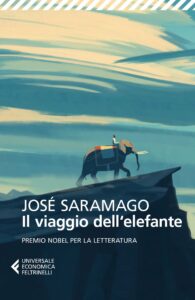
“Il primo passo fu negli appartamenti della corte portoghese, più o meno all’ora di andare a letto”
Un elefante di nome Salomone attraversa a piedi mezza Europa, da Lisbona alla Spagna e poi da Genova fino a Vienna, come regalo di nozze di João III, re del Portogallo, all’arciduca austriaco Massimiliano II. L’episodio storico del XVI secolo fornisce lo straordinario innesco narrativo per José Saramago per creare una grande avventura in cui sono percorse le strade del continente al seguito di Salomone: eserciti bislacchi, prepotenti figure di sangue blu, sacerdoti che a seconda delle circostanze esorcizzano l’elefante oppure ne supplicano il miracolo, in un’età che passerà alla storia come quella della Controriforma, ma anche cavalli, buoi e contadini. Su tutti si staglia la figura di Subhro, il conducente oltre che amico dell’elefante, che con il suo straordinario acume riesce a cavarsela sempre per il meglio, deridendo ogni volta le inutili arroganze del potente di turno. Favola raffinatissima ma anche grande metafora della vita: qui Saramago ha buon gioco nell’esercitare il suo migliore umorismo e la sua ironia graffiante verso la burocrazia e la corruzione intrinseca di tutti gli uomini. Un libro delizioso e arguto, una grande allegoria sul potere.

Il primo passo fu negli appartamenti della corte portoghese, più o meno all’ora di andare a letto
Un elefante di nome Salomone attraversa a piedi mezza Europa, da Lisbona alla Spagna e poi da Genova fino a Vienna, come regalo di nozze di João III, re del Portogallo, all’arciduca austriaco Massimiliano II. L’episodio storico del XVI secolo fornisce lo straordinario innesco narrativo per José Saramago per creare una grande avventura in cui sono percorse le strade del continente al seguito di Salomone: eserciti bislacchi, prepotenti figure di sangue blu, sacerdoti che a seconda delle circostanze esorcizzano l’elefante oppure ne supplicano il miracolo, in un’età che passerà alla storia come quella della Controriforma, ma anche cavalli, buoi e contadini. Su tutti si staglia la figura di Subhro, il conducente oltre che amico dell’elefante, che con il suo straordinario acume riesce a cavarsela sempre per il meglio, deridendo ogni volta le inutili arroganze del potente di turno. Favola raffinatissima ma anche grande metafora della vita: qui Saramago ha buon gioco nell’esercitare il suo migliore umorismo e la sua ironia graffiante verso la burocrazia e la corruzione intrinseca di tutti gli uomini. Un libro delizioso e arguto, una grande allegoria sul potere.
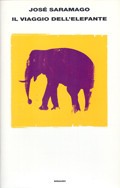
In un’Europa percorsa dalla riforma luterana, l’elefante Salomone, dono di re João del Portogallo all’arciduca Massimiliano, intraprende un incredibile viaggio che da Lisbona lo porterà, attraverso la Spagna e l’Italia, fino a Vienna, capitale dell’Impero. È accompagnato da Subhro, suo fedele amico e custode, e da una pittoresca carovana di ufficiali, soldati, servitori, preti, cavalli e buoi.Tra fiaba e cronaca, il nuovo, straordinario romanzo di Saramago, potente e visionario, delicato e umano.Siamo a metà del xvi secolo, e nell’Europa tramortita dai venti della protesta luterana fa la sua comparsa l’elefante Salomone, giunto dall’India a stupire le folle ma che adesso, a Lisbona, non fa che «mangiare e dormire».Sembra una presenza inutile, quand’ecco che João III, sovrano del Portogallo e dell’Algarve, e sua moglie Caterina d’Austria decidono di inviarlo in dono all’arciduca Massimiliano, proprio ora che si trova a Valladolid in quanto reggente di Spagna.
Il regalo viene accettato, e così si procede a organizzare la carovana che dovrà accompagnare il portentoso quadrupede e il suo cornac Subhro prima da Lisbona al confine con la Spagna, e poi da Valladolid fino a Vienna, passando per Genova, Verona, Padova e Innsbruck.
Il romanzo è quindi il racconto di questo viaggio, di questa variopinta comitiva di ufficiali, soldati, servitori, preti, cavalli e buoi che, in mezzo a molte difficoltà e tra ali di gente entusiasta, ha il compito di scortare il prezioso dono fino a Vienna, dove l’elefante sarà artefice di un «miracolo» squisitamente umano.
Un libro corale, ironico e delicato, che coinvolge il lettore in prima persona, gettandolo, attraverso la forza visionaria della scrittura, nei meandri della Storia in cui tutti siamo immersi.
«Per Harold Bloom, José Saramago è il più grande romanziere vivente e “uno degli ultimi titani”. Come un titano ha scritto il suo ultimo libro, Il viaggio dell’elefante. Un trionfo del linguaggio, dell’immaginazione e dell’umorismo». El País
«Una sorta di viaggio donchisciottesco, in compagnia di portatori, armigeri, preti, ufficiali, signore e signorine, attraverso un’Europa percorsa dalla riforma luterana e da lotte intestine. E al contempo una riflessionie – tipicamente “saramaghiana” – sull’uomo, sui suoi difetti e sulle sue debolezze, sul potere, sull’amicizia». Paolo Collo, la Repubblica
«Un libro sorprendente che mostra una potenza narrativa comparabile a quella dei grandi romanzi di avventure dai classici cavallereschi alle opere di Jules Verne». Pedro Mexia, Internazionale
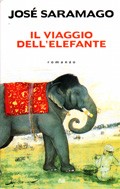
Mondolibri
2009 (Trad.: Rita Desti)
Language
Italian
2009
Mexico
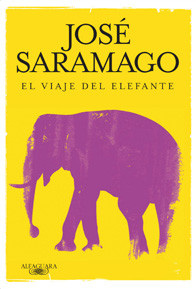
La historia narra el viaje épico de un elefante asiático llamado Salomón que, en el siglo XVI, tuvo que recorrer Europa, desde Lisboa hasta Viena, por caprichos reales y absurdas estrategias. Un hecho real, ocurrido en la época de Maximiliano de Austria, que está en la Historia o, para ser más rigurosos, en la pequeña historia. Una novela coral llena de hombres y mujeres que entran y salen siguiendo los pasos del elefante y su cuidador y cruzándose para compartir perplejidades, esfuerzos o la armoniosa alegría de un techo. Leyéndola es posible comprender por qué su autor afirma que la literatura es una de las más ricas fuentes de las que puede beber el espíritu. Quizá no pueda hacer gran cosa por el cuerpo, pero el alma la necesita como la boca precisa al pan.
Mozambique
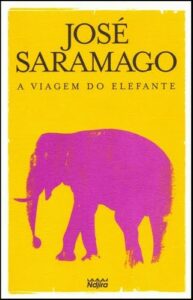
Editorial Ndjira
2009
Language
Portuguese
Editorial Ndjira
Norway
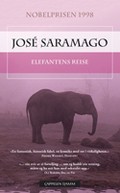
Cappelen
2010 (Trad.: Kjell Risvik)
Language
Norwegian
Året er 1551, og dom João den tredje, kongen av Portugal og Algarve, grunner på om gaven han ga sin hustrus fetter, erkehertug Maximilian, ved dennes giftemål fire år tidligere, var for ringe for hans herkomst og fortjeneste. Det er hans kone, dona Catarina av Østerrike, som kommer på at de kan gi ham elefanten Salomo, som de to årene de har eid den, ikke har gjort annet enn å ete og sove. Slik innledes elefantens strabasiøse reise fra Lisboa til Wien, sammen med kornaken Subhro og et følge av kavaleri og intendantur.Elefanten vandrer ut i det ukjente og opplever like uforutsette ting som en Don Quijote, med like dårlige forutsetninger for å forstå hva den møter på sin vei. Dag etter dag, i regn og snø, i søle og støvføyke, i bitende kulde og skåldende hete, fortsetter den sin ferd mot et mål den ikke kjenner. På veien blir den sett av et mylder av mennesker som tolker det som skjer, slik at de til sammen skaper en reiseskildring eller en elefantbiografi som er like morsom som den er klok.
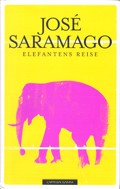
Året er 1551, og dom João den tredje, kongen av Portugal og Algarve, grunner på om gaven han ga sin hustrus fetter, erkehertug Maximilian, ved dennes giftemål fire år tidligere, var for ringe for hans herkomst og fortjeneste. Det er hans kone, dona Catarina av Østerrike, som kommer på at de kan gi ham elefanten Salomo, som de to årene de har eid den, ikke har gjort annet enn å ete og sove. Slik innledes elefantens strabasiøse reise fra Lisboa til Wien, sammen med kornaken Subhro og et følge av kavaleri og intendantur.Elefanten vandrer ut i det ukjente og opplever like uforutsette ting som en Don Quijote, med like dårlige forutsetninger for å forstå hva den møter på sin vei. Dag etter dag, i regn og snø, i søle og støvføyke, i bitende kulde og skåldende hete, fortsetter den sin ferd mot et mål den ikke kjenner. På veien blir den sett av et mylder av mennesker som tolker det som skjer, slik at de til sammen skaper en reiseskildring eller en elefantbiografi som er like morsom som den er klok.
Poland
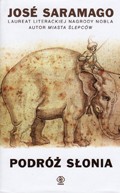
(…) gdyby Gilda Lopes nie zabrała mnie do restauracji Pod Słoniem, ta książka by nie powstała. Trzeba było, żeby w mieście Mozarta nastąpiła koniunkcja niezgłębionych zrządzeń losu, abym mógł zapytać: “Co to za postaci?” Postaci były malutkimi drewnianymi figurkami ustawionymi w rządku, a pierwszą z nich, patrząc z prawej do lewej, była nasza wieża Belém. Po niej następowały wyobrażenia różnych budynków i europejskich zabytków, które w ewidentny sposób przedstawiały jakąś marszrutę. Powiedziano mi, że chodzi o podróż słonia, który w XVI w., dokładnie w 1551 r., gdy królem był pan Jan III, został zaprowadzony z Lizbony do Wiednia. Przeczułem, że może w tym być jakaś historia…W 1551 roku portugalski król Joăo III podarował arcyksięciu Maksymilianowi osobliwy prezent ślubny: słonia zwanego Salomonem. W towarzystwie arcyksięcia, jego młodej małżonki i ich straży przybocznej niezwykły bohater przemierza Europę rozdartą reformacją i wojnami domowymi.Podróż słonia z Lizbony do Wiednia zapisała się w pamięci uczonych, historyków i zwykłych ludzi. Saramago stworzył powieść, którą hiszpański dziennik “El País” określił jako “triumf języka, wyobraźni i humoru”.
José Saramago (1922-2010), laureat literackiej Nagrody Nobla z 1998 r. i najpopularniejszy na świecie prozaik portugalski, sławę zdobył dopiero w sześćdziesiątym roku życia swoją trzecią powieścią Baltazar i Blimunda, nagrodzoną prestiżową nagrodą portugalskiego PEN Clubu oraz Nagrodą Literacką Miasta Lizbona. Zmarł 18 czerwca 2010 roku.
Nakładem Domu Wydawniczego REBIS ukazały się dotychczas: Baltazar i Blimunda, Wszystkie imiona, Rok śmierci Ricarda Reisa, Kamienna tratwa, Historia oblężenia Lizbony, Miasto ślepców, Miasto białych kart, Ewangelia według Jezusa Chrystusa oraz O malarstwie i kaligrafii.
UK
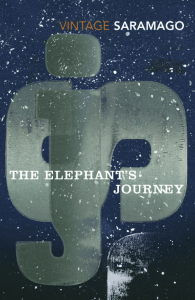
Vintage
2017 (Trad.: Margaret Jull Costa)
Language
English
For two years Solomon the elephant has lived in Lisbon. Now King Dom João III wishes to make him a wedding gift for a Hapsburg archduke in Vienna. The only way for Solomon to get to his new home is to walk. So begins a journey that will take the stalwart elephant across the dusty plains of Castile, over the sea to Genoa and up to northern Italy where, like Hannibal’s elephants before him, he must cross the snowy Alps. Based on a true story, Saramago’s tale is an enchanting mix of fact, fable and fantasy.
Extremely funny. Saramago writes with a masterfully light hand… A series of contained miracles of absurdity, quiet laughter rising out of a profound, resigned, affectionate wisdom.
— Guardian
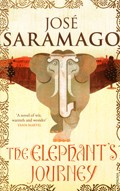
Harvill
2010; 2011 (Vintage Books) (Trad.: Margaret Jull Costa)
Language
English
Solomon the elephant’s life is about to be upturned. For two years he has been in Lisbon, brought from the Portuguese colonies in India. Now King Dom João III wishes to make him a wedding gift for the Hapsburg archduke, Maximilian. It’s a nice idea, since it avoids the Portuguese king offending his Lutheran cousin with an overtly Catholic present. But it means the poor pachyderm must travel from Lisbon to Vienna on foot – the only option when transporting a large animal such a long way. So begins a journey that will take the stalwart Solomon across the dusty plains of Castile, over the sea to Genoa and up to northern Italy where, like Hannibal’s elephants before him, he must cross the snowy Alps. Accompanying him is his quiet keeper, Subhro, who watches while – at every place they stop – people try to turn Solomon into something he is not. From worker of holy miracles to umbrella stand, the unassuming elephant suffers the many attempts of humans to impose meaning on what they don’t understand.Saramago’s latest novel is an enchanting mix of fact (an Indian elephant really did make this journey in 1551), fable and fantasy. Filled with wonderful landscapes and local colour, peppered with witty reflection on human failings and achievements, it is, in the end, about the journey of life itself.«Extremely funny. Saramago writes with a masterfully light hand… A series of contained miracles of absurdity, quiet laughter rising out of a profund, resigned, affectionate wisdom» Guardian
«His most optimistic, playful, humorous and magical book, a grace note written near the end of his life» Los Angeles Times
«Here he has seized the opportunity to turn an unlike tale… into something far larger than even its elephantine subject» Independent
Republic of Macedonia
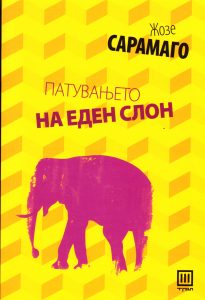
Патувањето на еден слон е волшебна приказна проткаена со мудрост и хумор за трајноста на пријателството и за минливоста на славата.
Во 1551 г. португалскиот крал Жоао III решава да му прати на австрискиот надвојвода Максимилијан невообичаен свадбен дар: слонот Соломон. Одеднаш сите се растрчуваат да ги подготват слонот и неговиот чувар Субхро. Необичната свита и кралската гарда го изминуваат целиот континент опустошен од реформацијата и граѓанските војни, низ попатните сведоштва на зналците, историчарите и оџагорените обични луѓе. Карванот се пробива низ древните градови на северна Италија; храбро се искачува по Алпите и стравотните теснини Исарко и Бренер; преку Средоземно Море па пругоре по реката Ин, и најпосле пристигнува пред величествената порта на царска Виена…
Патувањето на еден слон е сказна богато проникната со иронија и емпатија, проткаена со духовити размисли за човечката природа, едно значајно толкување на моќта која го навредува човековото достоинство. Лос Анџелес тајмс
Czech Republic

Saramago se pro svůj román o sloním putování inspiroval skutečnou událostí. Zhruba v polovině 16. století se totiž portugalský král Jan III. rozhodl vyslat přes celou Evropu slona indického, který předtím dva roky strádal v zapomenutém koutě jeho lisabonského paláce. Měl se měl stát velkolepým svatebním darem pro jeho švagra, arcivévodu rakouského a mimo jiné i titulárního českého krále Maximiliána II. Habsburského. Příběh slona Šalamouna, který za doprovodu vojenské eskorty pchází přes prašné kastilské pláně až k pobřeží Středozemního moře, aby se po jeho vlnách přeplavil od italského Janova, odkud se přes zasněžené Alpy dostane až do Vídně, je především podobenstvím o lidském bláznovství. Ať už jde o šílené nápady mocných, které někdo musí uskutečnit, nebo o představy prostých lidí, kteří si během cesty do exotického tvora promítají všechno možné. Barvité líčení různých krajů a lidských mravů je zábavné a poučné zároveň.
Romania
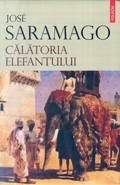
Scris la zece ani dupa ce i s-a decernat Premiul Nobel, romanul Calatoria elefantului descopera un autor in plina forta a splendorii literare.Calatoria elefantului, roman aparut in 2008, relateaza voiajul epic al lui Solomon, elefantul, calatoria pe care a facut-o in secolului al XVI-lea, cind regele Joao al III-lea i l-a oferit in dar varului sau Maximilian, arhiduce al Austriei. Nu este un roman istoric, ci un amestec de fapte reale si imaginare, indemnindu-ne sa recunoastem realitatea si fictiunea ca fiind o unitate indisolubila – trasatura majora a tuturor marilor opere. Este, de asemenea, o reflectare asupra conditiei umane, cu umor si ironie, trasaturi ale viziunii autorului, nemilos de patrunzatoare, venind impreuna cu acea forma de infinita compasiune cu care Saramago percepe slabiciunile umane.„M-a fascinat ideea calatoriei elefantului, ca metafora pentru viata. Cu totii stim ca vom muri, dar nu si circumstantele…” (Jose Saramago)„Cel mai interesant lucru, in Calatoria elefantului, este de fapt munca in sine cu ironia – de buna seama cathartica –, modul in car
Russia
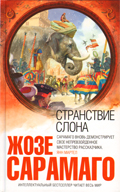
«Странствие слона» — предпоследняя книга Жозе Сарамаго, великого португальского писателя и лауреата Нобелевской премии по литературе, ушедшего из жизни в 2010 году. В этом романе король Португалии Жуан III Благочестивый преподносит эрцгерцогу Максимилиану, будущему императору Священной Римской империи, необычный свадебный подарок — слона по кличке Соломон. И вот со своим погонщиком Субхро слон отправляется в странствие по всей раздираемой религиозными войнами Европе, претерпевая в дороге массу приключений. Путь его лежит через Вальядолид и Геную, Верону и Венецию, через непроходимые альпийские перевалы, по живописной реке Инн — и наконец в имперскую столицу Вену, сердце державы Габсбургов.
Впервые на русском.
Serbia
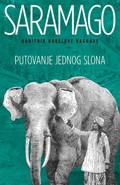
Dobitnik Nobelove nagrade!
Zadivljujuća priča o slonu, njegovom čuvaru i njihovom putovanju po srednjovekovnoj Evropi zasnovana na istinitom događaju.
Po značaju i književnoj poruci Putovanje jednog slona nesumnjivo se može nazvati testamentarnim Saramagovim delom. Godine 1551. portugalski kralj Žoao III poslao je nadvojvodi Maksimilijanu neobičan svadbeni dar: jednog indijskog slona u pratnji njegovog čuvara, koji su dotad čamili zanemareni na dvorskom imanju u Lisabonu. U Saramagovoj književnoj interpretaciji ovog istorijskog događaja, karavan koji predvode sam nadvojvoda i njegova žena, sa štitonošama i volujskim zapregama koje tegle hranu za slona, kreće polako na put – kroz Portugaliju i Španiju, morem do Italije, pa preko Alpa sve do carske Vijene, u kojoj nadvojvoda stoluje u kući Habzburga.
Trijumf virtuoznog Saramagovog stila, mašte i humora, Putovanje jednog slona očaravajuća je i mudra priča o trajnosti prijateljstva i prolaznosti slave.
„Književnost i jezik u čistom obliku, istančan dar, delo dostojno virtuoznosti jednog Servantesa po velikoj metafori života, dočarali su nam ovo putovanje kao veličanstveni pohod pod otvorenim nebom.“ Fernando Gomez Agilera, Jornal de letras, artes e ideas
„Saramagov jedinstven književni postupak, sa neobičnom interpunkcijom i nekonvencionalnim smenjivanjem pripovedačkih glasova, odmah vas osvaja svojim neodoljivim ritmom čim se pisac upusti u opisivanje svih iskušenja ove avanture, uz naizmenično ironične i saosećajne tonove prema akterima putovanja.“ S. Marfi, Metro
„Još jedno vrhunsko delo književnog genija.“ Boston Globe
Turkey
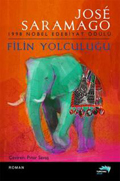
16. yüzyılda Portekiz Kralı, Süleyman adlı filini Avusturya Arşidükü Maximilian’a hediye etmek ister ve Süleyman bu uzun yolculuğa çıkar.
Nobel Edebiyat Ödülü sahibi José Saramago’nun en neşeli, en keyifli romanı Filin Yolculuğu işte bu tuhaf serüvenin hikâyesini anlatıyor.
Saramago severleri şaşırtacak bu keyifli roman, bir yandan da filin gariban ama köylü kurnazı terbiyecisi Subhro ile kafileye eşlik eden soylular bağlamında filin tanık olduğu insanlık komedyasına eğlenceli-eleştirel bir bakış getiriyor.
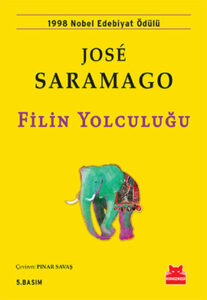
Kıta Avrupası’nın en batısından, Lizbon’dan Viyana’ya doğru yola çıkan bir fil ile bakıcısı yoksul Subhro’nun ve bu tuhaf yolculuğun hikâyesidir Filin Yolculuğu. 16. yüzyılda, Portekiz kralı III. João, kuzeni Kutsal Roma-Germen İmparatoru II. Maximilian’a hediye olarak gönderir fil Süleyman’ı. Süleyman ile Subhro, yanlarında kendilerine eşlik eden Portekiz kralının korumaları ve yardımcı ırgatlarla zorlu yolculuklarına başlarlar. Portekiz’i, İtalya’yı, Alpler’i geçerken hayatlarında ilk kez bir Hintliyle karşılaşan, ilk kez bir fil gören köylüleri ve kasabalıları şaşırtır ve etkilerler. Yolculuğun ikinci bölümünde bizzat İmparator Maximilian ve karısı Maria tarafından karşılanır ve Viyana’ya onlarla birlikte giderler. José Saramago’nun bu en eğlenceli romanında, fil terbiyecisi Subhro’nun erdemi, pasifist felsefesi ve yaşama bakışındaki doğallık ve Süleyman’ın emir kabul etmeyen doğası, yolculuğun ritmini belirlerken, insanların ruhlarında değişimlere yol açar. Hinduizm, mistisizm ve Hıristiyanlık hikâyeleriyle, mucizelerle renklenen romanda Süleyman ve Subhro’nun dokunduğu insanlar, kilisenin söz verdiği türden bir mucizeyle karşılaşmazlar ama bu yabancılar onların ruhlarında derin izler bırakır. Saramago her zamanki ince mizahıyla, muhteşem metaforlarıyla ve insana dair gözlemleriyle olağanüstü bir yolculuğu anlatıyor.
(Tanıtım Bülteninden)
